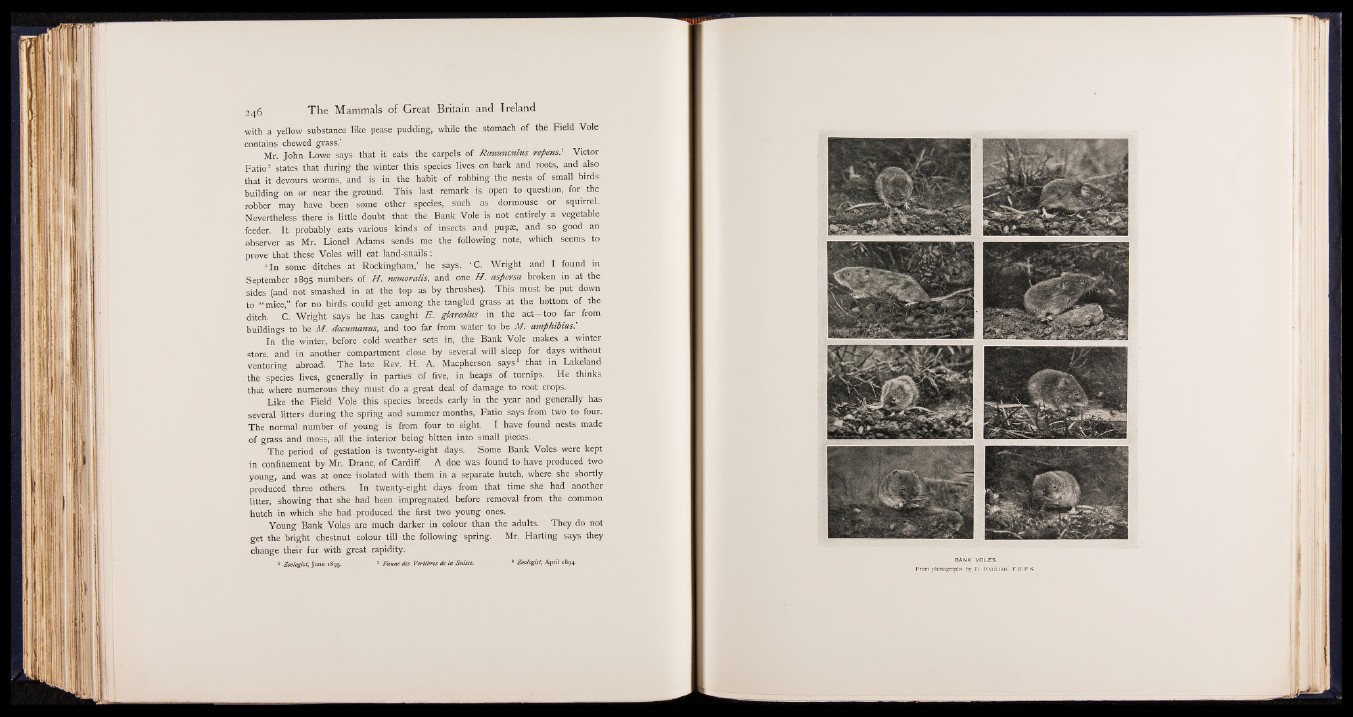
with a yellow substance like pease pudding, while the stomach of the Field Vole
contains chewed grass.’
Mr. John Lowe says that it eats the carpels of Ranunculus repens} Victor
Fatio2 states that during the winter this species lives on bark and roots, and also
that it devours worms, and is in the habit of robbing the nests of small birds
building on or near the ground. This last remark is open to question, for the
robber may have been some other species, such as dormouse or squirrel.
Nevertheless there is little doubt that the Bank Vole is not entirely a vegetable
feeder. It probably eats various kinds of insects and pupae, and so good an
observer as Mr. Lionel Adams sends me the following note, which seems to
prove that these Voles will eat land-snails:
‘ In some ditches at Rockingham,’ he says, ‘ C. Wright and I found in
September 1895 numbers of H . nemoralis, and one H . aspersa broken in at the
sides (and not smashed in at the top as by thrushes). This must be put down
to “ mice,” for no birds could get among the tangled grass at the bottom of the
ditch. C. Wright says he has caught E . glareolus in the act—too far from
buildings to be M. decumanus, and too far from water to be M. amphibiusl
In the winter, before cold weather sets in, the Bank Vole makes a winter
store, and in another compartment close by several will sleep for days without
venturing abroad. The late Rev. H. A. Macpherson says8 that in Lakeland
the species lives, generally in parties of five, in heaps of turnips. He thinks
that where numerous they must do a great deal of damage to root crops.
Like the Field Vole this species breeds early in the year and generally has
several litters during the spring and summer months, Fatio says from two to four.
The normal number of young is from four to eight. I have found nests made
of grass and moss, all the interior being bitten into small pieces.
The period of gestation is twenty-eight days. Some Bank Voles were kept
in confinement by Mr. Drane, of Cardiff. A doe was found to have produced two
young, and was at once isolated with them in a separate hutch, where she shortly
produced three others. In twenty-eight days from that time she had another
litter, showing that she had been impregnated before removal from the common
hutch in which she had produced the first two young ones.
Young Bank Voles are much darker in colour than the adults. They do not
get the bright chestnut colour till the following spring. Mr. Harting says they
change their fur with great rapidity.
1 Zoologist, June 1895. * Fauiu des Ver&bres de la Suisse. * Zoologist, April 1894.